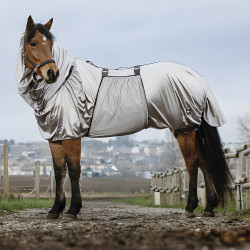The Shetland Pony is a small, hardy and strong pony originating from the Shetland Isles and is suitable as a riding pony for children and a driving pony for adults.
History Of The Shetland Pony
The Shetland Pony has long inhabited the Shetland Islands off Northern Scotland but the exact origins of the Shetland Pony are unknown. Excavations have shown that small ponies have inhabited the Shetland Isles since at least the bronze age.
The small size of the Shetland Pony, its strength and hardiness and ability to live on sparse grazing has enabled it to cope with the harsh winters and survive on the Shetland Isles for many centuries.
Over the years Shetland Ponies have been used as pit ponies and for pulling carts of peat and seaweed in the Shetland Isles, and later became popular ponies for children to ride and as a driving pony.
The first written record of the Shetland Pony was in 1603 in the Court Books of Shetland and the Shetland Pony became the first pony to have its own breed society with the Shetland Pony Stud Book Society being formed in 1890. Towards the end of the 19th century Shetland Ponies were exported off the Shetland Isles to other parts of the UK and abroad, and Shetland Ponies are now found in many countries today.
Height Of The Shetland Pony
The Shetland pony stands up to 10.2 hh.
Colour Of The Shetland Pony
Shetland ponies are black, bay, brown, chestnut, grey and part-coloured.
Breed Characteristics Of The Shetland Pony
The Shetland pony has a small broad head, sloping shoulders, short back and legs, full mane and tail. The Shetland pony is able to carry considerable weight and is hardy.
Temperament Of The Shetland Pony
Shetland ponies can be headstrong and independent.
Uses Of The Shetland Pony
The Shetland Pony today is mostly used as a riding pony for children and a driving pony. Shetland Ponies are used for pleasure and also in the show ring being shown ridden, in hand and in harness at shows throughout the UK.













